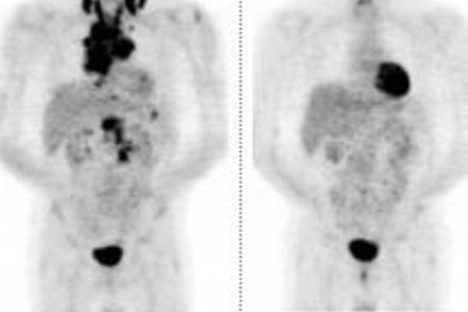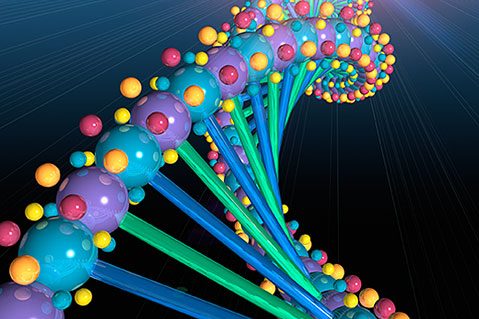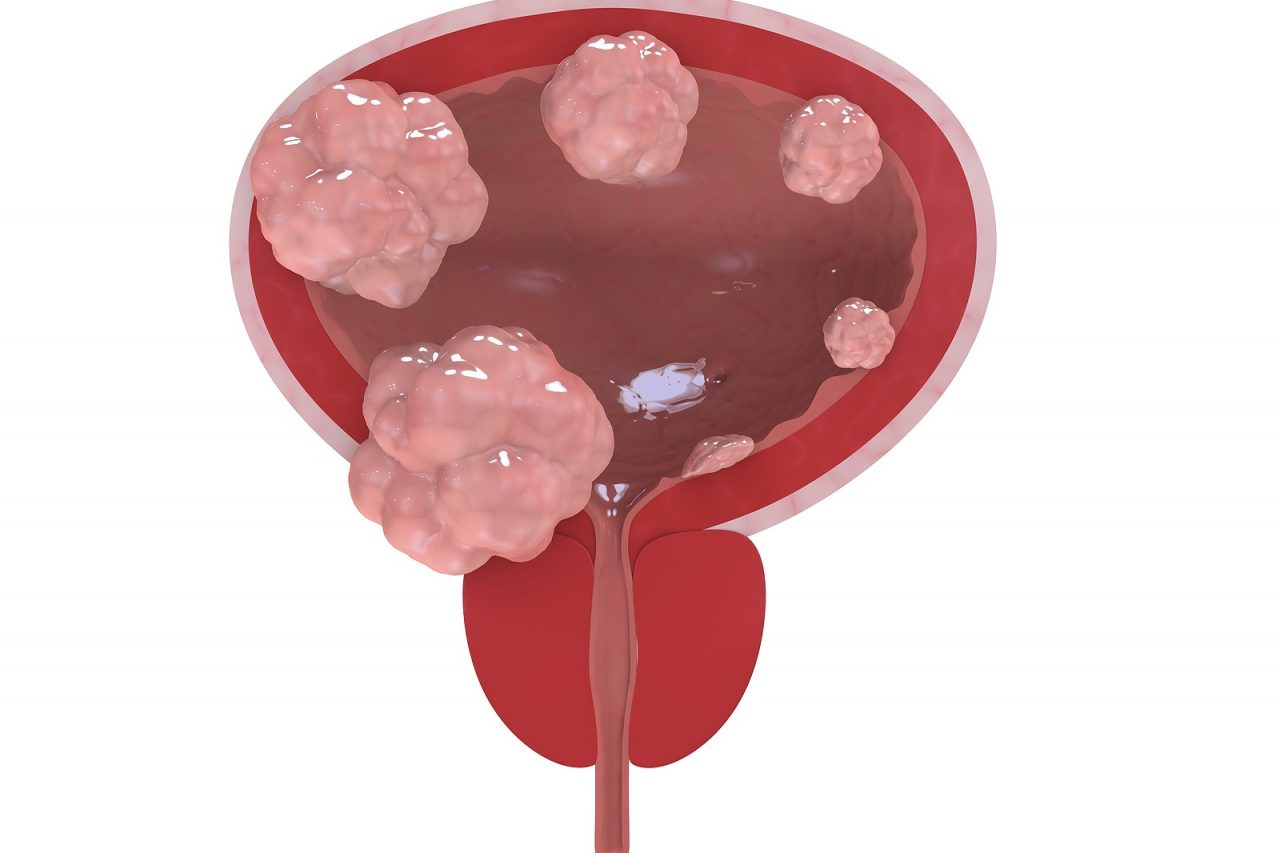If I had to choose my “least favorite” cancer, it would be brain tumors. This malady is not only challenging to treat, but it attacks in such a personal and disturbing way. It is hard enough to fight a complex disease, but to do it when the ability to focus and understand is disrupted by brain injury is a terrible curse. Still we have learned a lot and therapy is improving, so it is important to take a moment to discuss this awful disease.
Malignant tumors of the brain affect over 50,000 adults in this country each year, and the rate has been rising for the last 50 years. More than half of these are the most aggressive form, glioblastoma. The rest are a mixture of different less aggressive forms of brain cancer and as a rule have a better prognosis. For example while only 3% of patients with glioblastoma survive five years, 30% of patients with the less aggressive brain tumor, anaplastic astrocytomas, live that long. Younger, healthier patients with less aggressive brain tumors tend to survive longer and have a higher cure rate.
The cause of most brain tumors is unknown. It is increased in Caucasian males. It seems to be more frequent in white-collar works and health care providers, but also in electricians. It has been shown that high dose radiation, such as might be used to treat cancer or from atomic fallout, increases brain cancers. Less than five percent of brain tumors are hereditary. Smoking, cell phone use, diet, infections or trauma has not been proven to cause brain tumors.
Cancer is growth because of damage to growth controlling genetic switches in cells. Control switches that are supposed to be off are turned on or switches that are supposed to suppress growth are turned off. Researchers are studying the genetic mutations which result in brain cancer. The different cancer types seem to have different abnormal genes and the cause of these cancers may result in different genetic injuries. At this time, we do not have enough information to change therapy for individual patients based on gene tests in brain tumors. However, breakthroughs in the molecular genetics of brain tumors are occurring and therapy will soon be designed based on genetic information.
The major group of primary malignant brain tumors appears to begin in the “stem” or mother cells whose normal function is to build the support structure of the brain. Tumor cells display the appearance of such “glial” cells. The most common cancerous brain tumors, in order of increasing aggressiveness are anaplastic oligodendrogliomas, anaplastic astrocytomas, and Grade III or Grade IV gliomas. The last tumor is the most common of all and the most deadly. It is generally referred to as a “glioblastoma (GBM).
As a tumor grows it causes damage to the brain tissue. What neurologic injury happens will depend on where in the brain the tumor is growing. If it is in the back of the brain, it can affect vision or balance. If it is in the sides of the brain it can affect speech or movement, much like a stroke. In the front of the brain, it can cause confusion or changes in personality, much like Alzheimer’s. If a cancer becomes large it can cause a combination of these problems. These symptoms get worse as a cancer grows or better if the tumor can be controlled. Usually brain tumors do not cause pain. Brain tumors almost never spread to the rest of the body.
A biopsy of a brain tumor is vital in order to prove the diagnosis and design therapy. This can be done by a needle biopsy, using a highly accurate stereotactic apparatus, or tissue can be obtained if surgery is done to remove the cancer. This pathology analysis proves that the cancer originated in the brain (primary). It eliminates the possibility the cancer spread to the brain (metastatic). Knowing the type of brain tumor helps to design therapy and predict prognosis.
The malignant brain tumors are generally treated in a similar way. First, as much of the cancer is surgically removed, as is possible. This is often limited because of the location of the cancer. If removing the tumor requires damage to vital parts of the brain and would leave the patient more handicapped, then the amount of surgery is limited. This is a common problem with these tumors. Second, the more aggressive tumors (especially glioblastoma) have a tendency to invade into and mix with brain tissue inches away from the main tumor. These means that even if the visible mass is completely removed, cancer cells may remain behind.
The second step of therapy is a combination of radiation and oral chemotherapy (temozolomide). The goal is to treat any obvious tumor that may remain, and to treat microscopic contamination by cancer cells of the rest of the brain. While radiation schedules vary, generally the treatment is once a day, for five minutes, five days a week for about six weeks. Radiation is given to the whole brain with a boost to the tumor area. Because aggressive brain tumors tend to invade widely into brain tissue, specialized local radiation such as Cyberknife or proton beam are usually not used. These are reserved for small local cancers such as lower grade (less aggressive) brain tumors and cancers that have spread to the brain (such as lung or breast cancer). These techniques may be used for cancer recurrence.
Once a patient has completed the major part of treatment for a brain tumor, they are usually placed on a maintenance or “adjuvant” chemotherapy treatment. Most commonly, oncologists again use the oral drug temozolomide. This medicine usually has few side affects and may delay cancer recurrence.
Doctors use two methods to monitor the success of therapy. There is no blood test. They use regular scans of the brain (usually MRIs) and they use the neurologic exam of each patient. How each patient feels often signals changes in the tumor.
Brain tumors have a high risk for relapse, even with successful therapy. If the cancers do begin to grow or spread then patients will often experience new neurologic changes. At that time these cancers are generally considered incurable. Therapies are designed to try to slow the tumors, to prevent neurologic injury and to extend life. This might include new surgery, new radiation, or intravenous chemotherapy. Experimental techniques such as small molecule targeted drugs, vaccines and low intensity electric fields are being studied. These measures may help for a short while.
Dealing with this difficult disease can put a tremendous strain not only on the patient but on the family. Therapies are complex and require large investments in time and discomfort. The patient may become progressively debilitated and perhaps confused. This puts the burden on family members. In the bizarre world of brain tumors patients may survive months or even years, but become steadily disabled and dependent. Brain cancer can be very hard for family and medical support systems.
In patients who are in good health before they became ill, it is reasonable when it is first diagnosed to take an aggressive approach to this disease. Age is less important than general health. With proper surgery and radiation it may be possible to control this disease for a long time and certain patients are cured. Patients should see if research studies which may be available.
However, if this cancer returns it is important for patients and families to have direct, even if difficult, conversations with their doctors. Careful decisions about quality of life, verses side effects of therapy, need to be made. Reasonable goals should be set. What is possible and what is likely to occur? The debilitating and dehumanizing nature of this disease makes quality of life and, when appropriate, end-of-life planning, vital.







10 Comments